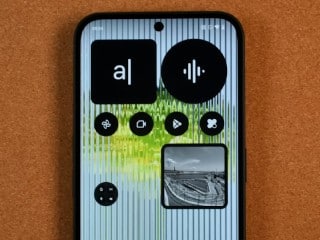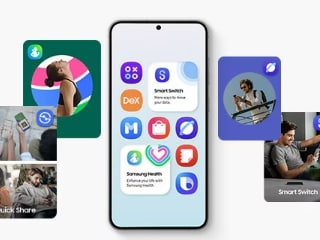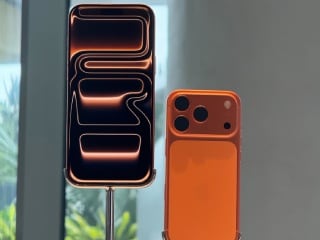- Home
- Mobiles
- Mobiles Features
- Huawei P30 Pro vs Samsung Galaxy S10+: Which Phone Has the Best Set of Cameras?
Huawei P30 Pro vs Samsung Galaxy S10+: Which Phone Has the Best Set of Cameras?

Huawei P30 Pro boasts of great camera specs but is it enough to displace the Galaxy S10+ from the top?
Huawei's newest flagship, the P30 Pro is here, and is positioned as stiff competition to the Samsung Galaxy S10 series, especially the Galaxy S10+ (Review). The Huawei P30 Pro emphasises its cameras as its most notable feature. This new model sports a large primary sensor, just like its predecessor, the P20 Pro (Review) but features and all-new reworked telephoto camera, which can now achieve a whopping 5x optical zoom and a 10x hybrid zoom. Huawei has managed this by aligning the elements of the telephoto lens horizontally within the body of the P30 Pro and using a prism to direct light towards the sensor.
The primary 40-megapixel camera has also been updated, and now features a RYYB (Red-Yellow-Yellow-Blue) colour filter, rather than the traditional R-G-G-B filter. Huawei calls this a SuperSpectrum sensor, and it promises to capture around 40 percent more light. Initial results already look promising, as a the Huawei P30 Pro has managed to rack up the highest ever score in DXOMark's tests for smartphone cameras.
It's time to put this new smartphone to the test ourselves and see how it compares to the Samsung Galaxy S10+. Samsung's flagship fared quite well in our recent camera comparison with 2018's top flagships, so this time, it's going to be just these two phones slugging it out. We left the camera settings pretty much as is and made sure that AI scene recognition on both phones was switched on.
Here's a quick rundown of the main camera specifications of both phones, before we get started.
| Sensor | Specification | Huawei P30 Pro | Samsung Galaxy S10+ |
|---|---|---|---|
| Primary Sensor | Resolution | 40-megapixel | 12-megapixel |
| Aperture | f/1.6 | f/1.5 + f/2.4 | |
| Autofocus | Laser + PDAF | Dual Pixel | |
| Stabilisation | Optical | Optical | |
Telephoto Sensor | Resolution | 8-megapixel | 12-megapixel |
| Aperture | f/3.4 | f/2.4 | |
| Autofocus | Yes | PDAF | |
| Stabilisation | OIS | OIS | |
Wide-angle Sensor | Resolution | 20-megapixel | 16-megapixel |
| Autofocus | Yes | No | |
| Aperture | f/2.2 | f/2.2 | |
| Additional Rear Sensor | ToF camera | None | |
Selfie Camera | Resolution | 32-megapixel | 10-megapixel |
| Aperture | f/2.0 | f/1.9 | |
| Autofocus | No | Dual Pixel | |
| Additional Front Sensor | None | 8-megapixel RGB depth sensor |
So without further delay, let's dive into it.
Huawei P30 Pro vs Samsung Galaxy S10+: Daylight landscape
In our first landscape test, we have a shot of a high-rise building directly facing the afternoon sun. Both phones do excellent jobs with details and colours. The Samsung Galaxy S10+ has a noticeably warmer colour tone compared the P30 Pro, which captures better what the weather was actually like.
Samsung's AI also recognised the buildings, whereas the P30 Pro showed a ‘Sky' logo in the viewfinder, which is why the blue is boosted a bit in its shot. The Huawei P30 Pro has a more neutral tone, which we liked.
In our second landscape test, we shot our subject against the fading light to see which phone does a better job with HDR. Here, the Galaxy S10+ tried its best to keep the foreground lit by lifting shadows and still keeping the exposure of the background, although it didn't succeed very well with the latter.
There's noticeable banding in the sky near the sun, which doesn't look too appealing. The Huawei P30 Pro on the other hand didn't lift the shadows in the foreground too much, so there was less detail in the leaves, and instead focused on properly exposing the sky. As a result, we got a much smoother gradient without any banding.
Huawei P30 Pro vs Samsung Galaxy S10+: Daylight macro
In our first close-up shot, both phones once again captured very good detail, but the main difference between the two lies in the exposure. The Samsung Galaxy S10+ once again produced a much warmer image, which brings out the colours of light-brown fruits at the bottom of the frame but also makes the oranges look a bit too orange. The Huawei P30 Pro has a comparatively cooler tone, do it didn't quite capture the brown colour of the fruit at the bottom row, but it did balance the colours of the other fruits pretty well.
For our second test, we went even closer to our subject to see how both phones handle depth of field. Both phones' AI features were able to recognise the flowers, but the Galaxy S10+ went a bit crazy boosting the saturation of the reds and greens. This resulted in a pretty jarring image. Also, the camera automatically decreased the aperture to f/2.4 since it was very bright out, thereby giving us a less intense background blur. The Huawei P30 Pro offers more sober colours but due to the f/1.6 aperture, the blurring was bit too aggressive and we lost focus on the leaves in the foreground too.
The Huawei P30 Pro also has a Super Macro feature, which lets you get really close to your subject using the wide-angle lens. This lets you capture very interesting perspectives, especially when shooting really tiny objects, such as the shot of the flower below.
Huawei P30 Pro vs Samsung Galaxy S10+: Low-light landscape
At night, with just street lights illuminating the road, the Huawei P30 Pro has a noticeable lead over the Galaxy S10+, even in Auto mode. Samsung's AI engages ‘Bright Night' shooting mode but it's no match for the P30 Pro's superior low-light chops. Details in distant objects are a lot sharper compared to an identical shot taken with the Galaxy S10+, and noise in the shadows is a lot less.
You can get even more detail in your photos when you use ‘Night' mode on the P30 Pro. You'll need to hold the phone steady for a couple of seconds, but even minor handshake is compensated for very well thanks to the optical stabilisation.
Huawei P30 Pro vs Samsung Galaxy S10+: Low-light macro
In the low-light macro test, the Galaxy S10+ finally scored a win, producing the best sharpness and detail. The Huawei P30 Pro's cooler colour tone tended to dilute the pink shade of the flowers, and its image wasn't as sharp as the one taken with the Samsung Galaxy S10+.
Under better ambient light indoors, it was pretty much a tie between the two phones. Both detected ‘Food' on the table and produced very good detail, colours, and sharpness. The colour temperature was the only thing that was noticeably different between the two here, and in this case, we prefer the overall colour tone of the Samsung Galaxy S10+ a bit more over that of the Huawei P30 Pro.
Huawei P30 Pro vs Samsung Galaxy S10+: Zoom
This is one area where the Samsung Galaxy S10+ — and practically all other phones — simply cannot keep up with the Huawei P30 Pro, since it just doesn't have the hardware to compete. Samsung's 2x optical zoom gets you respectably closer to your subject while still producing good detail, colours, and sharpness. However, the P30 Pro has a 5x optical zoom lens, which not only gives you a much more striking image at a higher zoom level. Details are crisper, colours look punchier, and overall, you get a much better-looking shot.
The Huawei P30 Pro also has something called 10x hybrid zoom, which uses a combination of the primary sensor and the telephoto sensor to produce much better detail when digitally zooming in beyond 5x. The Galaxy S10+ has a 10x zoom function too but this relies only on the telephoto sensor. The results are pretty dramatic, and the P30 Pro continues to deliver very good sharpness and detail, which is impressive.
When shooting in low light, we noticed that unless your subject is well illuminated, the Huawei P30 Pro won't switch to the telephoto lens when you try a 5x zoom. Instead, it will simply digitally zoom in using the main sensor.
![]() 50x digital zoom (Tap to see full-sized image)
50x digital zoom (Tap to see full-sized image)
After 10x, you can keep going till you hit a massive 50x digital zoom. At this point, it becomes a little tricky to get your subject framed properly, as even minor hand shakes are amplified. Image quality isn't great at 50x but the fact that you can even do this with a smartphone is impressive enough.
Huawei P30 Pro vs Samsung Galaxy S10+: Wide-angle
When shooting with the wide-angle lens, the Samsung Galaxy S10+ does a much better job. Not only does it capture more of a scene in one frame, but details in distant objects are also sharper and colours look more lively. The Huawei P30 Pro tends to produce a slightly washed-out image with weaker details in daylight.
In low light, the Samsung Galaxy S10+ has a better-looking image thanks to the warmer colour tone, although the Huawei P30 Pro isn't too far behind in this test.
Huawei P30 Pro vs Samsung Galaxy S10+: Portrait mode
Both phones have a Portrait mode, which adds some blur to the background for a more dramatic effect. The Huawei P30 Pro will automatically switch to Portrait mode if it detects a face. You also get Aperture shooting mode, which essentially does the same thing, with the difference being you can adjust the level of blur before and after a shot is taken. The P30 Pro also has a dedicated ToF or Time of Flight sensor just for calculating depth information.
The result is excellent edge detection in both Portrait and Aperture modes, but there is a difference in skin tones and overall colours. With Portrait mode, there's a visible boost in colour saturation, both on our subject's face and the background, whereas in Aperture mode, the skin tones look more natural.
The image in the middle looks very similar to what the Galaxy S10+ captures. However, the Galaxy S10+ doesn't blur out all edges very accurately — something you will notice if you look at the area between railing and our subject's arm. The Huawei P30 Pro, on the other hand, gets this spot on.
In our object test, both phones did a commendable job with edge detection. In fact, here we found that the Samsung Galaxy S10+ rendered better sharpness around the edges of the scooter, and the red really popped.
When photographing people without any blur effects against light, the Huawei P30 Pro exhibited better dynamic range, sufficiently exposing our subject's face without blowing out the background. The Galaxy S10+ offered better contrast, especially for the background, but this came at the cost of slightly underexposing our subject's face.
Huawei P30 Pro vs Samsung Galaxy S10+: Selfie
When shooting selfies in good light, the Huawei P30 Pro edged out the Samsung Galaxy S10+, producing more natural skin tones and slightly better detail. Even the colour on our subject's t-shirt was more accurate to the real thing.
However, the HDR did cause the sky in the background to look like it was overcast, when that wasn't the case. The Galaxy S10+ better represented actual weather conditions, but the subject itself was better represented in the image captured by the Huawei P30 Pro.
When switching to Portrait mode, or Live Focus as Samsung calls it, the Galaxy S10+'s secondary RGB depth sensor on the front helped it capture well-defined edges around our subject's face, especially the hair. The Huawei P30 Pro did a pretty good job too for a single-sensor setup.
In low light, with a good amount of ambient light falling on our subject's face, the Huawei P30 Pro produced a more balanced exposure with better skin tones and colours. The Samsung Galaxy S10+ brightened the face up a bit too much and messed up the texture and colour of the grey t-shirt.
In very low light, we tested the screen flash on both phones. Once again, the Huawei P30 Pro had a clear lead here, as it produced the most natural-looking skin tones. Plus, you can actually make out the colour and texture of the t-shirt and details on our subject's face were also good. The Samsung Galaxy S10+ lit up the selfie a bit better but the skin tone looks pale, the colour and texture of the t-shirt aren't accurate, and there's comparatively less detail in background objects.
Huawei P30 Pro vs Samsung Galaxy S10+: Video
The Huawei P30 Pro can shoot at 4K resolution, just like the Galaxy S10+, but its framerate is limited to 30fps and there's a 10-minute cap per clip. The Samsung Galaxy S10+ doesn't have such a time limit when shooting at 30fps and you also have the option to shoot at 60fps.
Video quality is very good and on par with that of the Galaxy S10+ when shooting in daylight. Both phones capture stereo audio, but the Galaxy S10+ delivers better spatial separation and the overall sound is richer.
In daylight, stabilisation is handled very well with no visible anomalies. At night, on a well lit street, both phones handle details and colours well and noise isn't too noticeable. The Huawei P30 Pro has some trouble resolving bright artificial lights which tend to flare in the footage, but other than this, the stabilisation is good.
When shooting 1080p video, the Huawei P30 Pro and Samsung Galaxy S10+ capture good details and colours. Stabilisation is handled well too. In very low light, the shimmer effect due to electronic stabilisation is noticeable and is a bit more pronounced on the P30 Pro.
Both phones are capable of shooting super-slow-motion footage in short bursts, at 720p and at 960fps. The quality is strictly average for both phones but of the two, the Samsung Galaxy S10+ produces more usable footage with sharper details and better colour saturation. The Huawei P30 Pro struggles to focus properly on objects, its colours look muted, and the objects in motion, such as the wings of the bird, have a weird stop-motion-like animated effect.
Verdict
With this relatively exhaustive test, it's safe to say that Huawei has crafted a pretty solid camera system for its new P30 Pro. Image and video quality get noticeable improvements over the Mate 20 Pro (Review), which was already very good to begin with.
The smartphone's biggest strength is its ability to get exposures right for pretty much any shot, be it at night or during the day. These shots might not always look the most dramatic or striking, and people who like highly saturated colours might find them a little bland in some cases due to the cooler, almost neutral colour tone. You can crank up the saturation by selecting the ‘Vivid' colour profile in the viewfinder, but honestly, we preferred the standard profile in most cases.
Compared to the Samsung Galaxy S10+ (Review), the Huawei P30 Pro delivers equally good results, and many times, even better ones, especially when it comes to selfies and portraits. Huawei's Master AI has evolved quite a bit from what we saw on the P20 Pro (Review), and is more refined and cleverer now in judging how to expose a scene correctly. Then there's the zoom capability. The P30 Pro easily has the best zoom system of any smartphone in the market right now. The image quality achieved even at a 10x zoom level is incredible.
Of course, it's not a completely a one-sided fight. Samsung still trumps the P30 Pro when it comes to video, offering better audio capture, a higher framerate option at 4K, and better quality slow-motion footage. It also has the better wide-angle camera, capturing more of a scene than the P30 Pro, with with better colours and detail.
Overall, we think the Huawei P30 Pro is a solid choice if you're buying a flagship smartphone primarily for its cameras. Even though it isn't perfect, we would recommend it just for that 5x optical zoom alone, which is unrivalled as of now.
Is Samsung Galaxy S10+ the best Android flagship overall? Are Samsung Galaxy Buds the best truly wireless headphones in India? We discussed these things on Orbital, our weekly technology podcast, which you can subscribe to via Apple Podcasts or RSS, download the episode, or just hit the play button below.
Catch the latest from the Consumer Electronics Show on Gadgets 360, at our CES 2026 hub.
Related Stories
- Samsung Galaxy Unpacked 2025
- ChatGPT
- Redmi Note 14 Pro+
- iPhone 16
- Apple Vision Pro
- Oneplus 12
- OnePlus Nord CE 3 Lite 5G
- iPhone 13
- Xiaomi 14 Pro
- Oppo Find N3
- Tecno Spark Go (2023)
- Realme V30
- Best Phones Under 25000
- Samsung Galaxy S24 Series
- Cryptocurrency
- iQoo 12
- Samsung Galaxy S24 Ultra
- Giottus
- Samsung Galaxy Z Flip 5
- Apple 'Scary Fast'
- Housefull 5
- GoPro Hero 12 Black Review
- Invincible Season 2
- JioGlass
- HD Ready TV
- Laptop Under 50000
- Smartwatch Under 10000
- Latest Mobile Phones
- Compare Phones
- OPPO A6c
- Samsung Galaxy A07 5G
- Vivo Y500i
- OnePlus Turbo 6V
- OnePlus Turbo 6
- Itel Zeno 20 Max
- OPPO Reno 15 Pro Mini 5G
- Poco M8 Pro 5G
- Lenovo Yoga Slim 7x (2025)
- Lenovo Yoga Slim 7a
- Realme Pad 3
- OPPO Pad Air 5
- Garmin Quatix 8 Pro
- NoiseFit Pro 6R
- Haier H5E Series
- Acerpure Nitro Z Series 100-inch QLED TV
- Asus ROG Ally
- Nintendo Switch Lite
- Haier 1.6 Ton 5 Star Inverter Split AC (HSU19G-MZAID5BN-INV)
- Haier 1.6 Ton 5 Star Inverter Split AC (HSU19G-MZAIM5BN-INV)



















